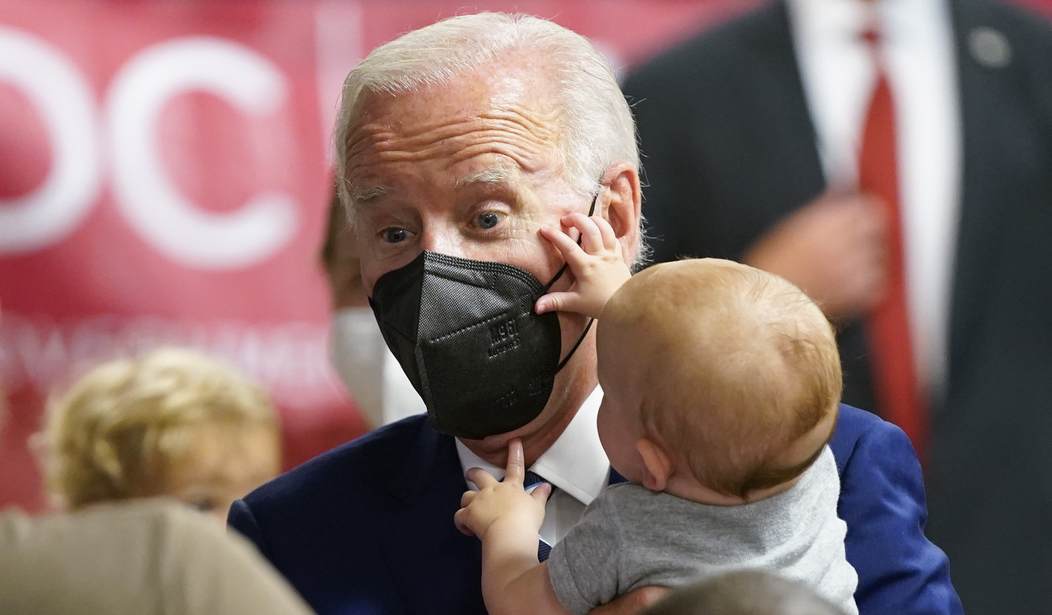Data from 2022, recently released by the CDC — why does an organization so well-funded take a year and a half to gather and release crucial public health data, anyway? — shows that infant mortality is on the rise in the United States for the first time in twenty years.
And you won’t believe what The Science™ is pinning it on.
Via CNN (emphasis added)
The infant mortality rate in the United States rose in 2022, the first jump in 20 years, according to data released Thursday by the US Centers for Disease Control and Prevention.
More than 20,500 babies died in 2022 before the age of 1, final records show. Overall, there were 5.6 infant deaths for every 1,000 live births, a 3% increase from the year before.
Infant mortality in the US has been generally trending down since at least 1995, when consistent tracking started, but rates are still much higher in the US than they are in many peer nations. There have been some small upticks over that time, but 2022 was the first time there was a statistically significant increase since 2002, according to the CDC’s National Center for Health Statistics.
On what do you suppose the governing authorities do not blame the surge in infant morality?
Continuing:
Covid-19 also probably played a significant role in the rise in infant mortality in 2022, [demographer and assistant professor of sociology at the University of Colorado Boulder] Stevenson said. Infections in pregnant women who were exposed to the coronavirus during the major surges in 2021 could have affected infants who would be born in 2022…
Recent research has drawn some connections between infant mortality and abortion restrictions, finding that infant deaths spiked in Texas after the state passed a law in September 2021 that banned nearly all abortions beyond about six weeks of pregnancy.
That’s right: the assistant sociology professor, the Expert™ CNN relies on to explain infant mortality, blames the spike in dead babies on COVID-19 and abortion restrictions, never once mentioning the experimental gene therapy the CDC recommended be given to all pregnant women despite the fact that it’s well-known that vaccinating pregnant women poses serious risks to the woman and her baby.
Across the pond in Australia, another academic hack, an “urban economist,” blames the “baby recession” on “cost-of-living pressures” and “economic uncertainty” — which may play a role, but again, not a whisper of the shots that are known to target the reproductive organs and which pass the spike proteins through breastmilk.
Via The Guardian (emphasis added):
Australia is in the grips of a “baby recession”, which some have attributed to rising cost-of-living pressures and economic uncertainty.
The number of births in Australia dropped to 289,100 in 2023, the lowest recorded since 2006, analysis from KPMG Australia showed.
The pandemic baby boom is over, with 26,000 fewer births last year compared with the 2021 spike and an overall 4.6% year-on-year decline.
Terry Rawnsley, an urban economist at KPMG, said economic uncertainty after the pandemic and stretched household budgets in a cost-of-living crisis meant many families delayed having children or put off having more kids.
In related news…
Via Natural News (emphasis added):
Heart failure has been on the rise among children recently, and a new study has linked this phenomenon to the Wuhan coronavirus (COVID-19) vaccines.
In the last three years, medical professionals have observed a rise in children with a range of heart problems, such as myocarditis and pericarditis, which were rare before COVID-19. Both of these conditions are well-known side effects of mRNA COVID-19 vaccines.
Although the mainstream media often tries to paint these deaths as connected to the COVID-19 virus itself and not the vaccines, a new study shows that these conditions are only appearing in children following vaccination rather than infection with the virus.
The study, which was carried out by researchers from the University of Oxford, looked at more than a million British children aged 5 to 15, comparing vaccinated and unvaccinated subjects and considering the number of doses each one received.
In addition to observing that hospitalizations related to infection with the virus itself were extremely rare among these age groups, they stated that no one in the entire subject population died as a result of the virus.
Moreover, they noted: “All myocarditis and pericarditis events during the study period occurred in vaccinated individuals.”
In the study, the researchers found that most pericarditis and myocarditis cases took place after children and adolescents received their first dose of the vaccine, with more than half of the adolescents who did experience these infections going to a hospital for treatment.
The full study is available here.










